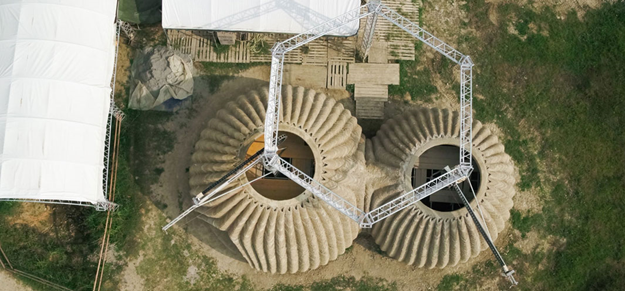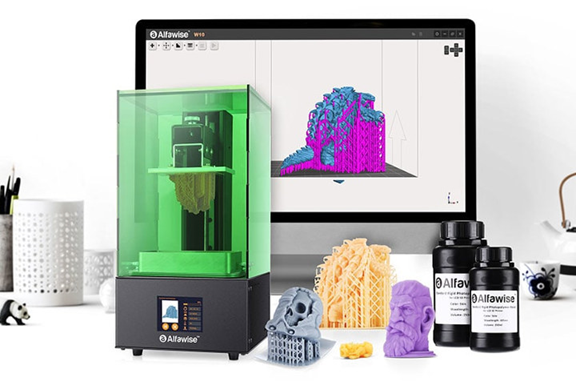3D printed raw earth house showcased at COP26
TECLA, the first 3D raw earth printed house – we already presented in the last February SAMANTHA project’s news – was just showcased at COP26 the 12th of November. It was just one of the 17 Build Better Now – you can visit the exhibition by clicking on this link – projects virtually exhibited in Glasgow.
The architect Mario Cucinella explained: “It is an almost zero-emission project. Its envelope and the use of a locally sourced material have made it possible to reduce waste and scrap. The local clay is quarried, shaped, inhabited, and, once it is no longer needed, it can simply return to the ground in a virtually infinite cycle that leaves no trace on the planet.”
This event brought the green potential of Additive Manufacturing to the worldwide media attention. As per Mario Cucinella’s statement, the main environmental advantages of 3D printing, compared to other production methods, are related to waste reduction and the possibility of using recycled materials.

3D printing could extend the life of a product by replacing its broken parts. On-demand replacement is estimated to grow fast in the next future, applying from industrial production lines to the household furniture.
PET filaments and other recycled plastics are more and more of use in 3D printing. Making the filament part of a circular economy loop improves the environmental performance of the new product by extending the life cycle via recycling and transformation. Again, as TECLA’s house shows us, stunning achievements come from using new sustainable materials in Additive Manufacturing. Raw earth and fibers coming from plants express great potential in the 3D printing application.

Surfing the green innovation wave to respond to such challenges is a great opportunity the Habitat sector must take advantage of. This perspective – with specific regards to recycling and green materials – is crucial and perfectly aligned with the objectives of the SAMANTHA project.